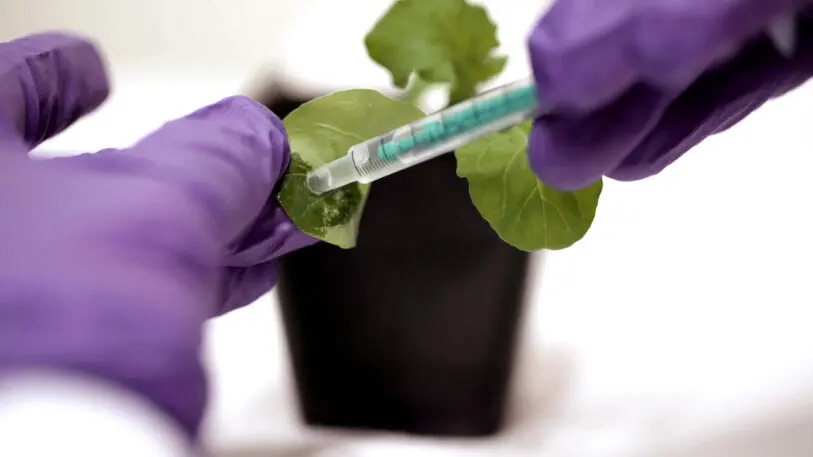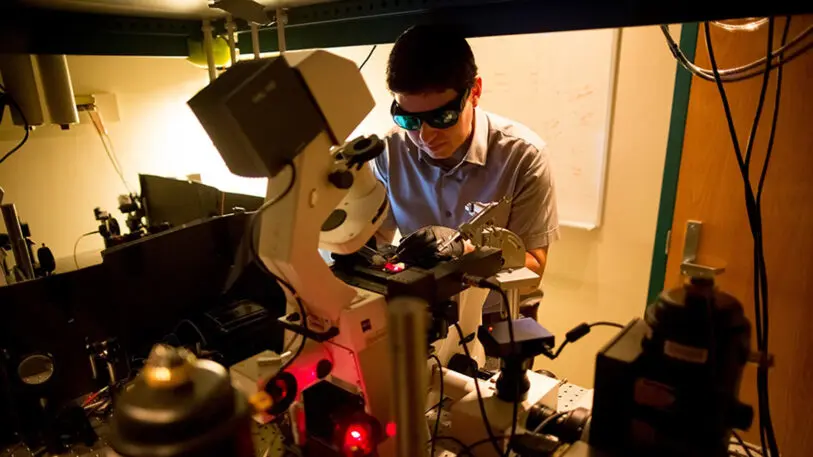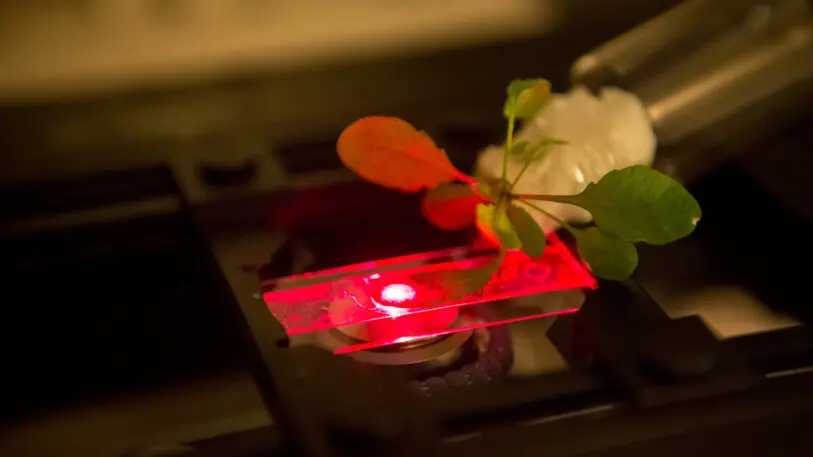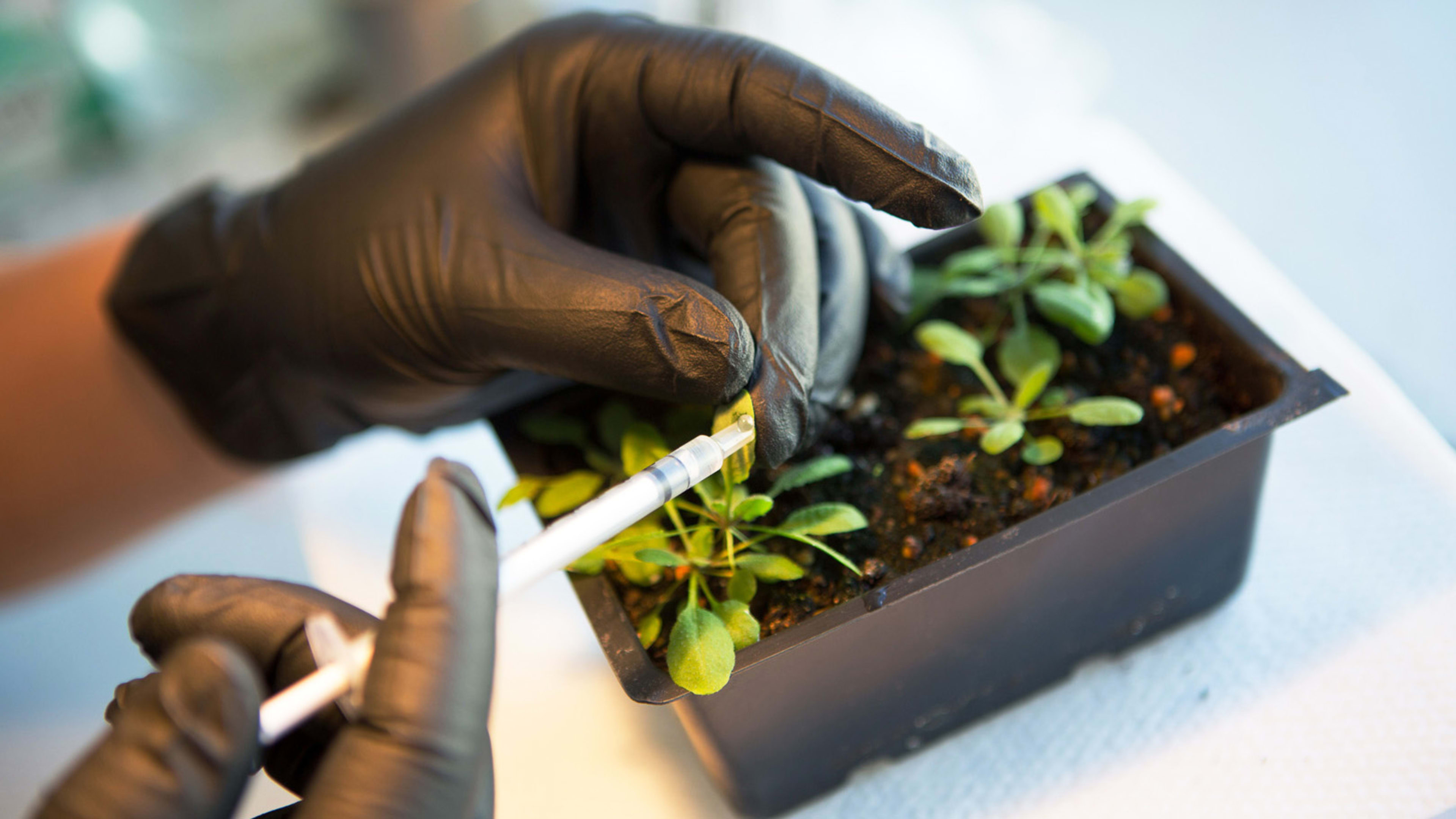When it grows in a field, most spinach just sits there, absorbing light and nutrients and growing leaves. A new, engineered version of spinach does quite a bit more: It can detect dangerous levels of arsenic in the soil and then send a signal to a nearby cell phone to warn a farmer. It’s one example of a “nanobionic” sensor: plants that are being developed to serve as biological warning tools, not food.
“We started asking the question, can we make living plants to do some of the functions that humans do by stamping things out of plastic and circuit boards—things that go into landfills?” says Michael Strano, a chemical engineering professor at MIT whose lab is researching how to embed nanoparticles—tiny particles 50,000 times smaller than the thickness of a human hair—in plants.

For something like arsenic, which is naturally present in the soil in many areas but typically hard to detect, the new nanobionic sensors are more accurate than any other tool that exists and easier to deploy.
Other plant sensors could be used to warn farmers about stress in crops—using the nanoparticles to help communicate the chemical signals that plants already send when they’re hot, or dry, or wounded. “If an insect lands on the plant leaf, from the first bite, . . . you get a certain kind of signal,” says Strano. “If you subject too much light to a plant called light stress, you generate a different signal. You can distinguish those two. If the plant is too hot, it generates a different kind of signal.”
If farmers look at the leaves of a plant, they’re skilled at recognizing what might be wrong, but by that point, “the damage is already done,” he says. “The plant has that information days, sometimes weeks, in advance. The plant is a very sensitive environmental sensor, and this technology allows us to intercept it so humans can intervene.”
Right now, conventional sensors used in agriculture are typically expensive. Some large farms might use drones with hyperspectral imaging, or analyze satellite images. But using plants, and the cheap electronics used to read the signals from the plants, is something that could be accessible to farmers everywhere.
On a farm, the sensor plants would be “biocontained,” planted separately from crops that are harvested for food. “They’re not designed to be eaten,” Strano says. “We’re making plants that essentially are hooked up to the internet. So they can experience the same environment, and they can detect and transduce all these signals, put them in electronic form.”


Nanoparticles can also be used to give plants completely different functions, such as serving as lights. Strano’s lab is now working on the second generation of a light-emitting plant. “In our vision, you’d be able to make plants that essentially just harvest energy from the sun, and then at nighttime, they can turn that into illumination,” he says. “There are a variety of reasons for doing this. It’s off-grid lighting. It has a negative carbon footprint. It doesn’t need an electrical grid. It can help the developing world get valuable lighting before they have the infrastructure of a grid, and it doesn’t need fossil fuels.”
Recognize your brand’s excellence by applying to this year’s Brands That Matter Awards before the early-rate deadline, May 3.
